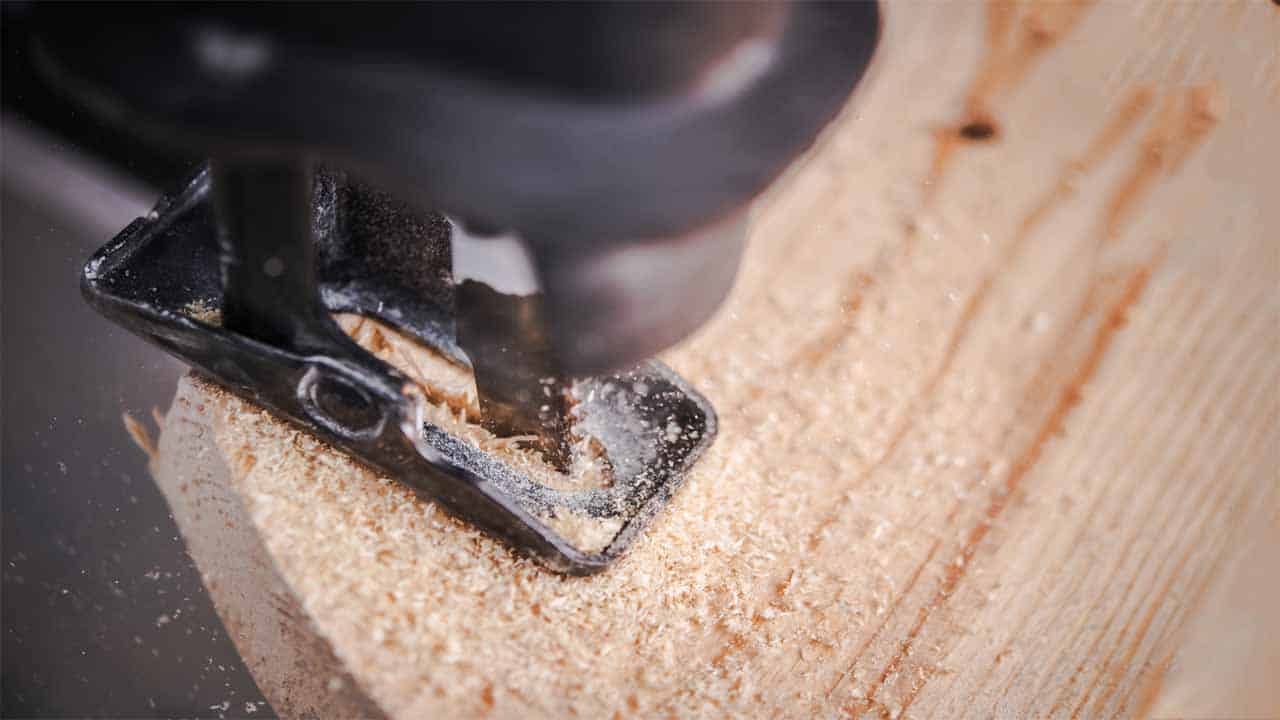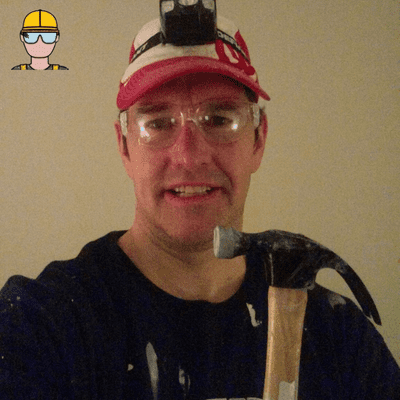How to Cut Straight With a Reciprocating Saw? (6 DIY Tricks)
TheToolGeeks.com is a participant in the Amazon Services LLC Associates Program and other affiliate advertising programs. We may earn from qualifying purchases. (Learn More).
A reciprocating saw is a fantastic and versatile tool that allows for quick, straight cuts on a variety of surfaces. Its intelligent design means that you can get to almost any area and make a cut fast.
Learning how to use one can be difficult, however – they tend to have a lot of kickback and need to be properly controlled for clean cuts. If you can master the reciprocating saw and all of its quirks, you won’t need to worry about making awkward cuts in hard to reach places again.
We will look at how to cut straight with a reciprocating saw on a variety of materials. We will cover appropriate safety gear and techniques as well as good technique in general for making a cut with a reciprocating saw.
We will also have a look at the different pros and cons of using the tool and how you can minimize the problems so that your jobs are professional and as easy as possible!
Jump To Page Contents:
What Is a Reciprocating Saw?
A reciprocating saw is a powerful tool that can be held with two hands for making cuts against almost any surface. The reciprocating saw blade is designed to be replaceable, so you can get the best cut possible regardless of what it is that you need cutting.
If you need to change the blade, make sure that the saw is turned off and that nothing is moving. Generally, there is a quick release lock that requires a half turn so you can pull out the blade quickly and replace it for working on multiple materials.
The heavy-duty body and handle give you excellent support for making difficult cuts and keep you safely away from the blade. They also have large shoes that are designed to be placed against the cutting surface for added support. This shoe will become your best friend as it cuts down on the vibrations and difficulties in using a saw like this!
As the blades are replaceable, you just need to find the right one for the job. These saws generally come with a variety of blades anyway, so you won’t need to go out and buy new ones especially for your new power tool.
There are two types of reciprocating saws — the cordless and corded version. If you are looking for a cordless version then make sure to click here to read our review.
Safety Tips
Although the body of reciprocating saws is quite large and will keep you away from the business end, you will still need to wear eye protection such as goggles and ear protection.
As they are designed to cut through any material, they can be extremely loud when going through things like metal. Protect those eyes and protect those ears so don’t need to worry about long-term injury.
A safety concern when cutting straight with a reciprocating saw is what happens when it drops after a cut. If you are cutting through a sheet that finishes at waist level or below, there is a tendency to let the saw “drop” after the cut.
If you are standing square to the sheet, however, this puts your legs and lower body directly in line with where the reciprocating saw blade wants to go.
When using a reciprocating saw, you should always be standing with your legs clearly out of the way of where the saw will fall and apply pressure to the saw towards the cutting material until the saw is stopped. This will protect you from serious injury.
Read More — Battery Reciprocating Saws ReviewHow to Cut Straight With a Reciprocating Saw?
When making a cut with a reciprocating saw, you have to go through a few simple steps before you can say that you really understand how to use it properly.

1.Mark the Line
Before cutting straight with a reciprocating saw, you need to make a clear and straight line that you will be able to see during the cutting.
Ideally, you should do this with a thick marker pen so the line can be seen when the blade is working, but a pencil can provide the same service if you don’t have a marker, or you can use a tape measure.
Unlike when working with a table saw or a circular saw, it can be difficult to use a guide to aid with your accuracy. Making sure your line is clear even if you have a saw in front of you will really help improve the quality of your cut.
2. Applying the Blade
Now that you have your mark, you get your blade set.
Hold the blade in two hands with your legs away from where the blade would go if it were to drop. You should still be able to apply plenty of pressure to the blade from this position.
With the saw in hand, tilt it back slightly towards your body with the tip of the blade pointing into the air. This tilt does not need to be huge, just enough so that the tip can meet the surface that you want to cut cleanly.
Put the blade to the wood or metal and you should see that the blade will sink in. As it goes into the wood, straight up the handle so that the body of the saw is at a 90-degree angle to the material you are cutting.
3. Using the Shoe
The shoe on your reciprocating saws is your best friend when making cuts. You will probably feel that there is some kickback from the saw as it goes through the wood or metal – the shoe is there to line up with material and give you added security and stability.
Plunge the saw into wood or material and let the shoe meet it. It should sit flat against the surface and should slow down the kicks that you are experiencing. This is the perfect position to begin our full straight cut from.
If you are going to be cutting on an uneven or irregular work surface, you might want to invest in an adjustable pivoting shoe.
This will be able to adjust whatever it is you are cutting and still provide the stability that you need. Even if you don’t need it for this job, it is still an excellent investment for someone who will be using reciprocating saws often!
Read More — Reciprocating Saw vs Jigsaw4. Lining the Blade Up for the Full Cut
When the shoe is touching the material, you will want to line the blade up fully with the line you have marked. Then you have to apply pressure and move slowly down through the wood.
Again, you should feel the vibrations slowly down and, if using a very high-quality blade, maybe even stop to a large extent. Keeping the blade secure and slowing down wobble is important for getting the highest quality finish.
To improve control and avoid the risk of injury, you should now line up the blade’s handle with your body. This gives you greater control over the blade and you will be able to use your body to guide the saw instead of just your arms.
5. Taking the Blade Through the Wood or Metal
Guide the saw through the material at a slow and steady pace to cut down on splintering and potentially slipping off course. Staying on the marked line is important, so don’t ruin your project now that you are most of the way through!
6. Finishing Up Your Work
When approaching the bottom of the material, position your body so that nothing is in the way of the blade if it falls down. This can be at a 90-degree angle from the blade with both legs away facing the side of the saw’s body.
As you take the blade through, hold the body tight, and carry on as if the wood was still there. Then allow the blade to stop by releasing the trigger and wait for it to come to a full stop. You can now safely lift the blade from below the material and put it down safely somewhere.
If you cut through a sheet and do not hold the saw in position, this can allow it to swing down and towards you due to the weight of the saw handle. This can lead to serious injury, so avoid it at all costs.
Read More — Sawzall Vs. Oscillating Multi-ToolThe Pros of Using a Reciprocating Saw
A reciprocating saw is a fantastic tool for many reasons, especially for making a straight cut, but here’s a rundown of our top 5:
- It is a powerful tool that can cut through almost anything with the correct blade attached to it; even if you don’t have the correct blades now, you will probably be able to find one that suits your needs
- It is an excellent power tool for quick cuts, especially if you simply need to lob a chunk of something else; this can be especially useful for loose pipes or wood with nails that are hazardous in the workplace
- It is incredibly easy to use – all you need are two hands and a way to push the trigger at the same time
- It is also versatile in that you can use it to cut below or above you with relative ease; if you need to cut through a floorboard, the reciprocating blades can do it; if you need to cut a hole in the roof above you, the reciprocating blades can do it. You’re only held back by how long you can hold it
- The shoe provides a great deal of support and stability for the user, meaning that you can focus on keeping the cut straight instead of supporting the entire saw
The Cons of Using a Reciprocating Saw
But the reciprocating saw is not perfect and has its drawbacks, especially for people who do not have extra equipment that helps with the problems that might arise in the day to day work on a worksite. Here’s 3 to be on the lookout for when using your saw and how best to tackle them:
- The reciprocating saw is not an accurate tool, but it’s not designed to be – it will give rough finishes that need extra work after the cut has been completed. If this is a problem for you, you can use different blades that offer greater levels of accuracy and cut down on finishing time
- These saws are also susceptible to vibrations and can lead to very uneven or unclean cuts if not done properly. The shoe is designed to take most of the bite out of the saw, but you can further improve this by using an anti-vibration handle that will stop the kickbacks affecting the user or an anti-slip grip which helps the user hold with better stability and avoids the chances of dropping the tool while in use
- The kickbacks can be pretty fierce with a reciprocating saw, especially if you’re not expecting them or you have not lined up the shoe correctly. If you need extra stability, you can use an adjustable pivoting shoe that will move to fit the material that is being cut and reduce the numbers of kicks you face
Conclusion
When using a reciprocating saw, you need to be controlled and smooth when applying the cut if you don’t want to spend a long time cleaning up the edge of the cut or having to repeat it.
However, it is an excellent, versatile tool that is a necessity for any woodwork who needs to make cuts that would be difficult with a circular saw.
Make sure that you are using the correct blades for the correct purpose and you will have an easy time making the most of your reciprocating saw. Plus, make sure to check the safety tips.
Playing with a few of the blades on scrap pieces of wood and metal will give you an excellent idea of what each of them is capable of and when you should use them.
If you have any questions about making a straight cut with a reciprocating saw then make sure to comment below.
Amazon and the Amazon logo are trademarks of Amazon.com, Inc, or its affiliates.

